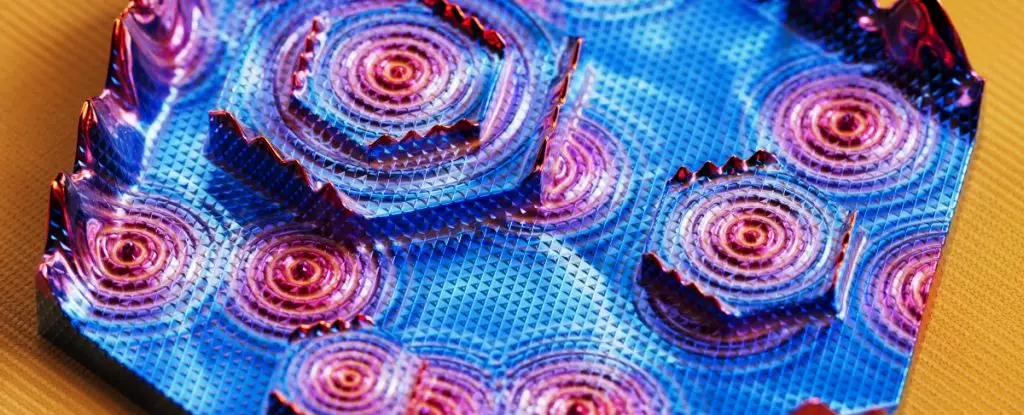In a groundbreaking discovery that has stunned the scientific community, physicists have unearthed a previously unknown phenomenon lurking beneath the surface of an arsenic crystal. This unexpected revelation came to light during a study of quantum topology, a field that delves into the intricate interplay between wave-like particle behavior and geometric mathematics.
Diving deep into the realm of quantum matter, researchers stumbled upon a peculiar fusion of two distinct quantum states, each depicting varying forms of electrical current. Physicist M. Zahid Hasan of Princeton University, leading the research effort, expressed his astonishment at the unanticipated nature of this finding, emphasizing that it had defied all theoretical predictions.
The Significance of Topology in Quantum Materials
Topology has emerged as a critical factor in deciphering the behaviors of materials governed by their wave-like properties, a category known as quantum matter. By focusing on the structural geometry of these materials, which remain unchanged when bent or warped, topology has the potential to influence the quantum activities of substances in diverse manners.
Exploring Arsenic as a Topological Insulator
While much of the current research centers on compounds featuring bismuth as a primary component due to its status as a proficient topological insulator, arsenic has also exhibited characteristics of this nature. Arsenic, capable of functioning as a topological insulator, presents a simpler and cleaner alternative to bismuth, paving the way for new discoveries in quantum states at room temperature.
A Surprising Encounter with Edge States
By cultivating crystals of gray arsenic with a metallic sheen and applying magnetic fields, the researchers ventured into uncharted territory. Through the use of advanced techniques such as scanning tunneling microscopy and photoemission spectroscopy, they uncovered not only surface states but also unexpected edge states lurking within the boundaries of a distinct topological insulator.
The emergence of this hybrid state, incorporating elements from two distinct topological classes, has opened up a new realm of possibilities in quantum materials research. Physicist David Hsieh of Caltech, not directly involved in the study, highlighted the intricate interactions between the boundary states arising from different topologies, culminating in the formation of a novel quantum state that transcends traditional boundaries.
Unlocking a New Frontier in Quantum Physics
This groundbreaking discovery holds immense promise for the future development of quantum materials and technologies, with the potential to revolutionize fields such as quantum computing. With arsenic serving as a unique platform for exploring uncharted territories in the realm of topological materials and quantum devices, the scientific community is poised to embark on a journey of unprecedented exploration and innovation.


Leave a Reply